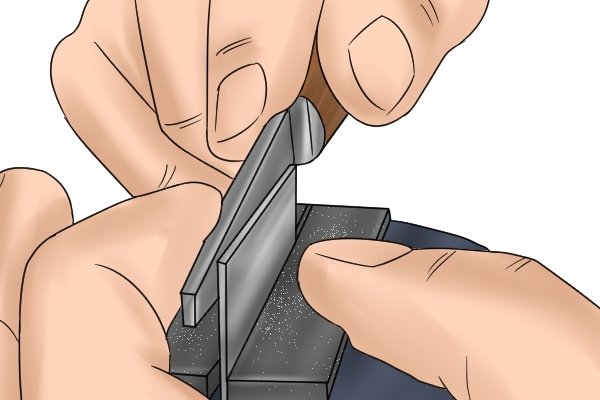
How to sharpen a blade on a double-handled scraper?
Content
| Once your double-handled cabinet scraper becomes dull, it will be difficult for them to run across the surface of your work and will no longer produce chips. When this starts to happen, it's time to sharpen the tool. The tools you will need are a file, a vise, a clean cloth, oil, and a polishing tool. | |
 | Step 1 - Blade ClampPlace the blade in a vise, making sure it is secure, but leaving enough room to work with the blade. |
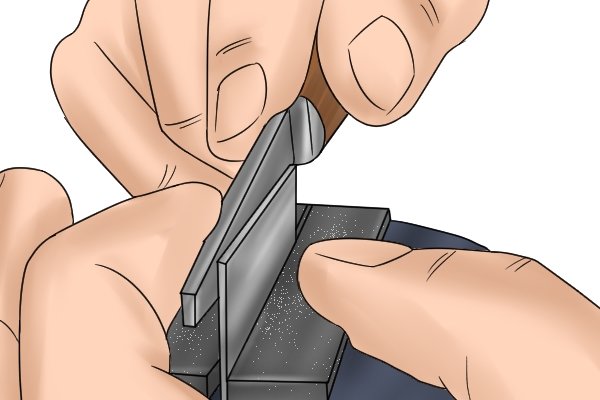 | Step 2 - FileRemove the old burr (metal protrusion) from the back of the scraper blade with a file. Lay the file on its side and slide back and forth. Repeat this action until the back of the blade is smooth and no more burrs. |
 | Step 3 - Angular FileUse a file at a 45 degree angle to clean the beveled edge of the blade. With one sliding motion, move the file away from you and to the side. Repeat this until the beveled edge of the blade is clean and smooth. |
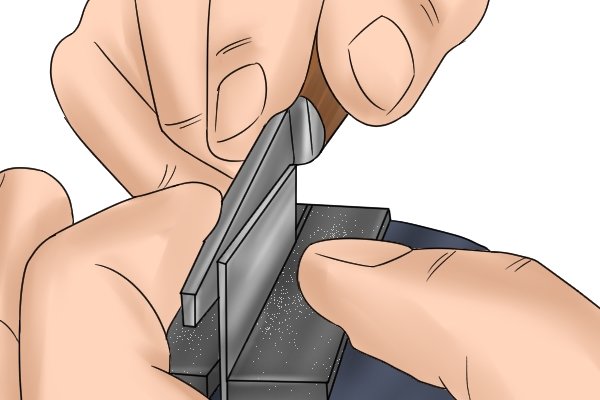 | Step 4 - File the Back of the BladeFile the back of the scraper blade again to remove any remaining material that may have formed from the beveled edge. |
 | Step 5 - Check for burrsRun your finger along the length and edge of the blade to make sure there are no burrs (rough edges) and the blade is smooth. |
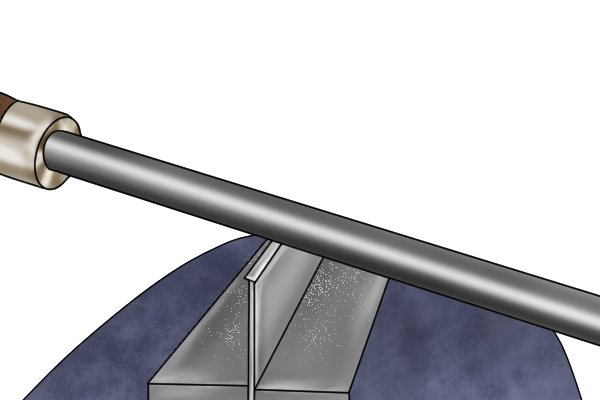 | Step 6 - Polishing the BladeNow take the polishing tool by placing your main hand on the handle and your non-dominant hand on the end of the tool. Hold the tool at the angle of the blade, pressing hard down the entire length of the beveled blade. |
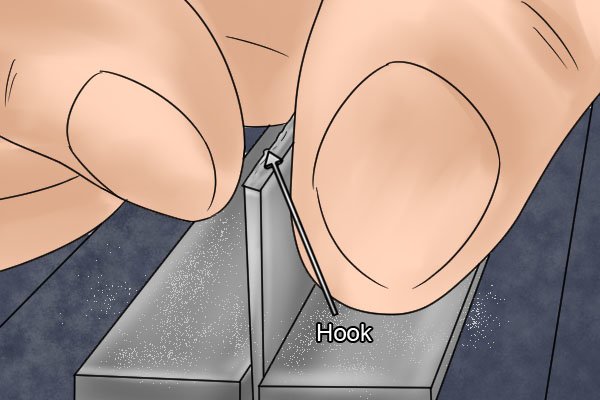 | Step 7 - Finish polishingRepeat step 6 until a "hook" appears along the trailing edge of the blade (top edge of the bevel). The presence of a hook or burr means the process is complete and the blade is ready to use again. |

